Is your company compliant with the European Accessibility Act? Download our guide and get informed now that it has already come into effect!
Is your company compliant with the European Accessibility Act? Download our guide and get informed now that it has already come into effect!
Web users
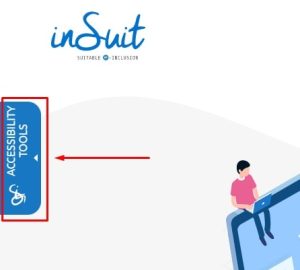 inSuit Tools™ is activated by clicking on the tab enabled for this purpose, right on the web page. Alternatively, you can use the clearly identified link or button provided on the website’s home page. In all cases, it can be activated using the keyboard or mouse by way of your technical aid or by selecting it via a mobile device.
inSuit Tools™ is activated by clicking on the tab enabled for this purpose, right on the web page. Alternatively, you can use the clearly identified link or button provided on the website’s home page. In all cases, it can be activated using the keyboard or mouse by way of your technical aid or by selecting it via a mobile device.
The first time inSuit Tools™ is activated on the website, a simple tutorial appears. A series of messages and instructions for using the interface provide the user with information about the tool’s main characteristics and features they will use for navigation. The next time you enter the website the tutorial will not automatically appear, but it can be activated at any time.
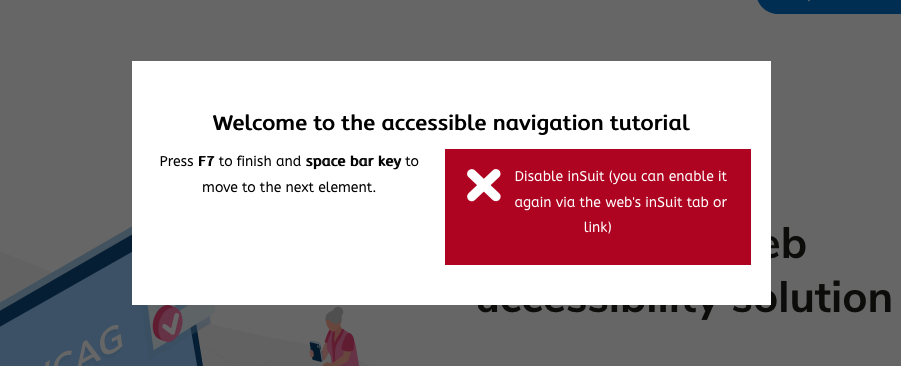
Since it is based on standard systems, inSuit Tools™ works with the three latest versions of the most common browsers, including market leaders (Firefox, Chrome and Microsoft Edge).
inSuit Tools™ works with all websites that have activated the service, at the discretion of the website owner. inSuit Tools™ activation and configuration are maintained when browsing the websites offering the service.
Reading of web page content and options can be activated or deactivated by selecting the speaker icon on the inSuit Tools™ menu bar located at the bottom of the page, or by pressing the F12 button on your keyboard.

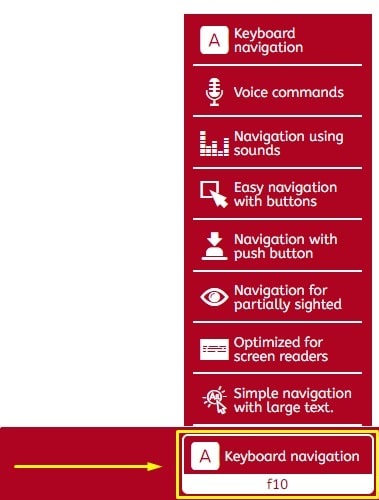 The different navigation methods are selected via the corresponding icon in the drop-down menu of the inSuit Tools™ menu bar, located at the bottom of the web page or by pressing the F10 button on your keyboard.
The different navigation methods are selected via the corresponding icon in the drop-down menu of the inSuit Tools™ menu bar, located at the bottom of the web page or by pressing the F10 button on your keyboard.
Yes, inSuit Tools™ can be used to navigate through a PDF document using any of its tools for accessible navigation (technical aids), including the reading of content.
inSuit Tools™ is a tool that serves a social purpose, and that is why we welcome any suggestions for improvement, especially since it is these users who can best detect shortfalls in usability. If you wish to participate in the improvement of inSuit Tools™ and benefit thousands of people, send us your suggestions via our accesible email form.
inSuit Tools® enables users to complete and handle all kinds of forms, ensuring accessibility throughout.
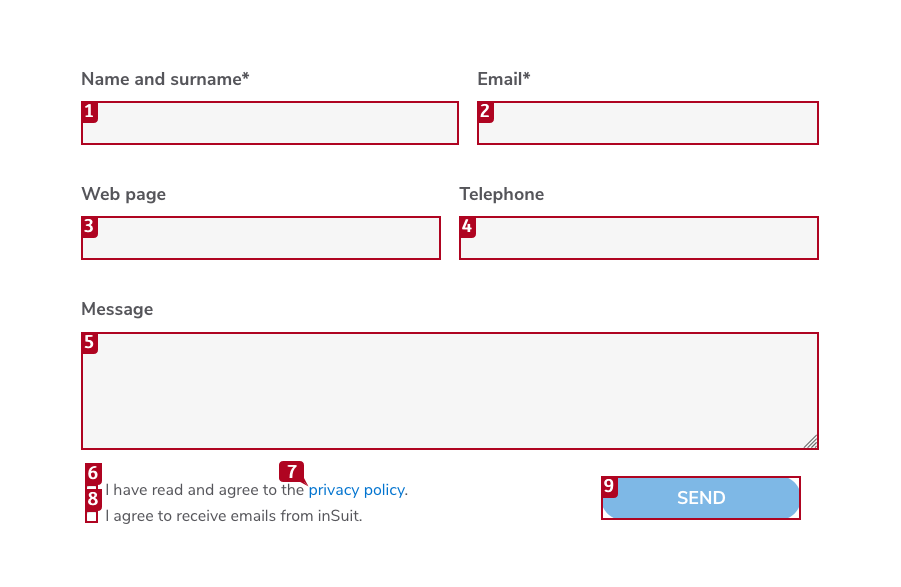 To ensure that form fields can be visualised and completed as simply as possible, a magnified form viewer replicating the form field appears on the lower inSuit Tools® menu bar. In addition, this field is linked to the voice reader so that you can hear the text that is being entered. Keyboard shortcuts for the different options available to the user are also shown.
To ensure that form fields can be visualised and completed as simply as possible, a magnified form viewer replicating the form field appears on the lower inSuit Tools® menu bar. In addition, this field is linked to the voice reader so that you can hear the text that is being entered. Keyboard shortcuts for the different options available to the user are also shown.
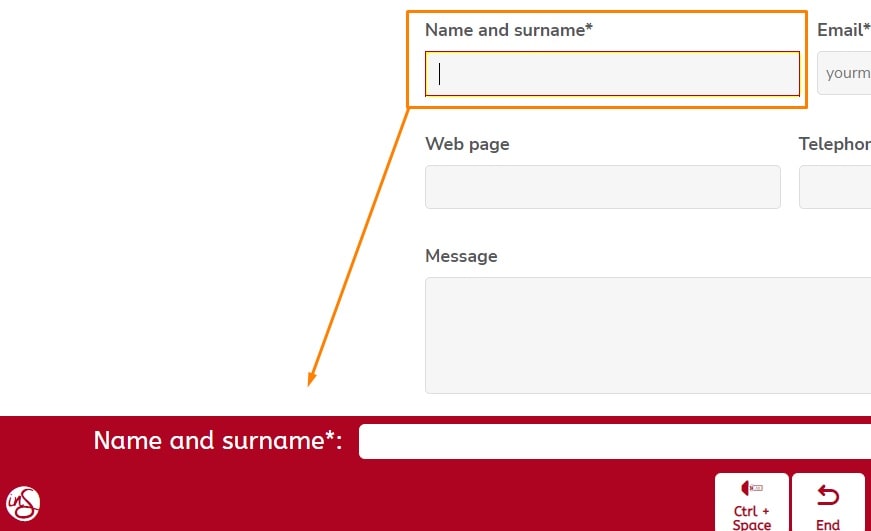
inSuit Tools™ provides an accessible viewer for all kinds of multimedia content, which adds a series of fully accessible playback controls to the inSuit Tools™ menu bar at the bottom of the web page. This includes an option to expand the video to full screen to enable proper viewing.
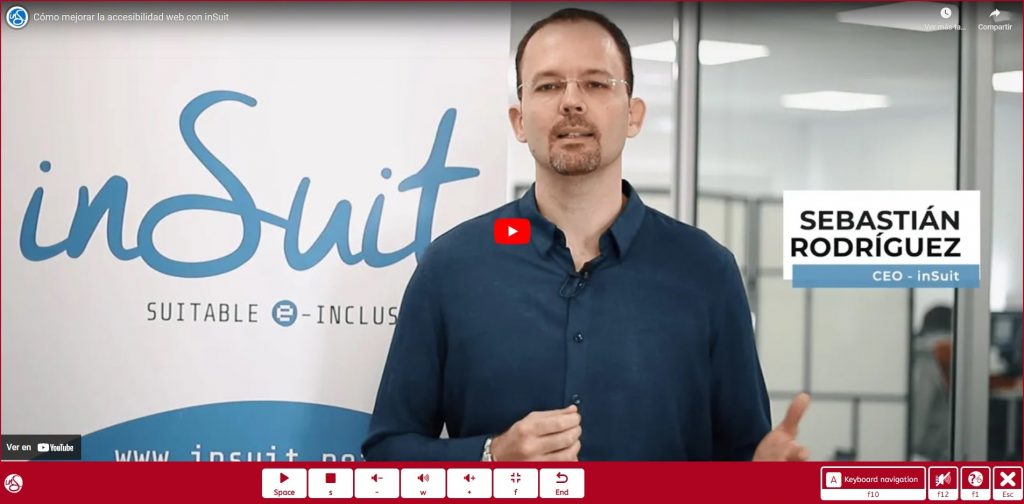
Keyboard shortcuts for the different options available to the user are also shown.

To deactivate inSuit Tools™ press the Esc button on the keyboard or click on the “Deactivate inSuit” button, graphically represented by the (“X”) icon on the inSuit Tools™ menu bar located at the bottom of the page.
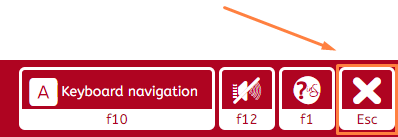
inSuit Tools™ enables users to navigate between web pages featuring the activated inSuit tool.
Website owners
inSuit Tools™ does not require any changes to your web page. The only thing that is required is the addition of a simple script to the beginning of the page, which will be provided by our implementation team when you register.
On the one hand, inSuit Tools™ improves your web page in accordance with WCAG 2.1 guidelines, even without activating the tool’s accessible navigation features. On the other, during our rapid inSuit Tools™ implementation process our team of digital accessibility and usability experts manually check and adjust the inSuit Tools™ accessibility rules on your website. This will enable your website to meet accessibility standards and regulations when implemented with our inSuit 360™ services.
What’s more, our continuous development of the inSuit Tools™ accessibility platform means your website will always be up to date in terms of web accessibility.
Yes, inSuit Tools™ enables you to use the most common authentication methods, such as digital certificates and usernames/passwords.
inSuit Tools™ is cloud-based, and therefore it does not require any further infrastructure.
Signing up for inSuit Tools™ is very easy. You can contact us here indicating the web pages where you would like to activate the accessibility platform and our team will take care of the rest.
inSuit Tools™ is a cloud-based service, which means that any improvements or new tools for accessible navigation (technical aids) will be incorporated into your web page automatically, ensuring that it keeps up with the latest web accessibility and usability technology.
inSuit Tools™ based on the web page content as it changes and therefore any content that is inserted or changed will work with inSuit Tools™ instantly.
Any changes to content and web page modifications that maintain its structure will work with inSuit Tools™ instantly.
No, inSuit Tools™ is an external service that does not overload the servers where your website is stored, nor will it cause your website to crash.
Standards
inSuit Tools™ incorporates a WCAG engine – the standard upon which web accessibility standards are based. This therefore ensures conformance with web accessibility standards and guidelines when implemented alongside our inSuit 360™ services.
You can learn about global and local web accessibility standards and regulations in the Standars section of our website.
These are based on WCAG (Web Content Accessibility Guidelines) published by the WAI (Web Accessibility Initiative), which is part of the W3C (World Wide Web Consortium), the main organisation behind Internet standards.

